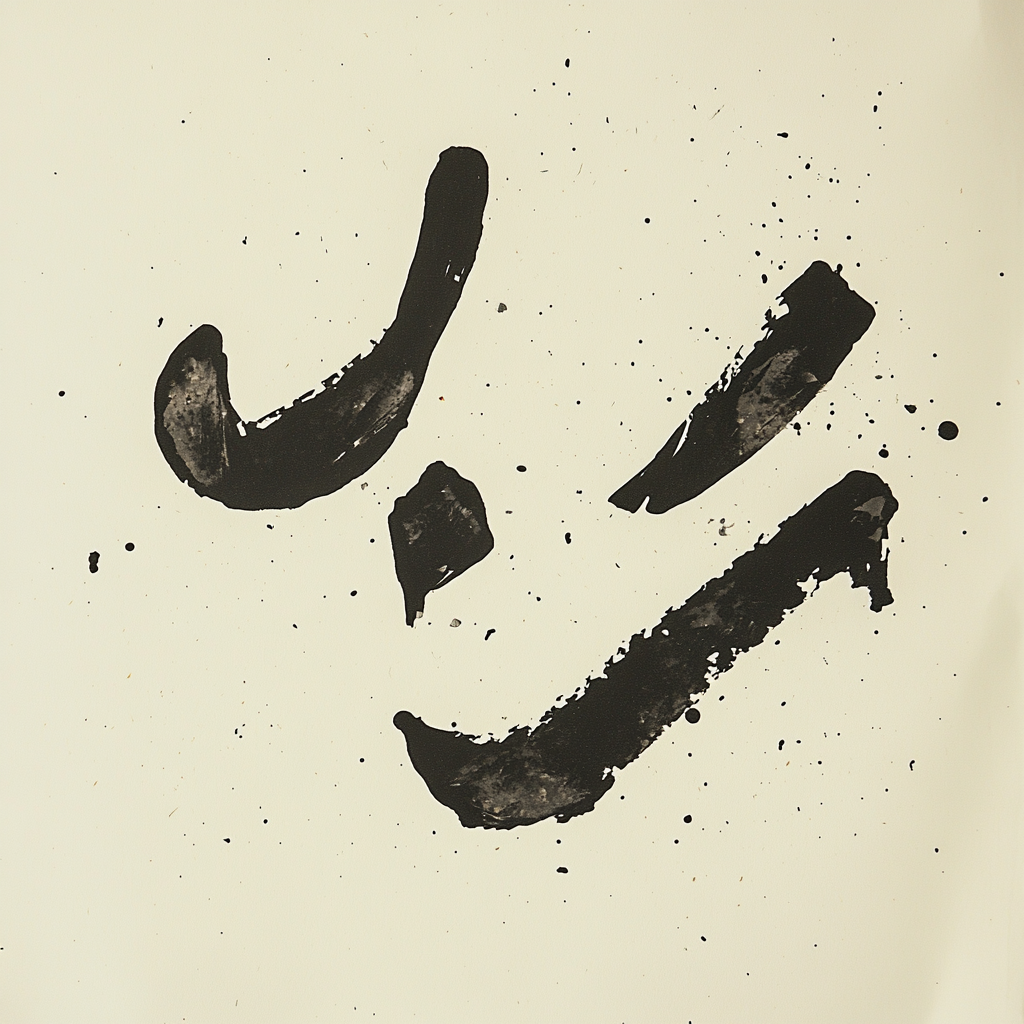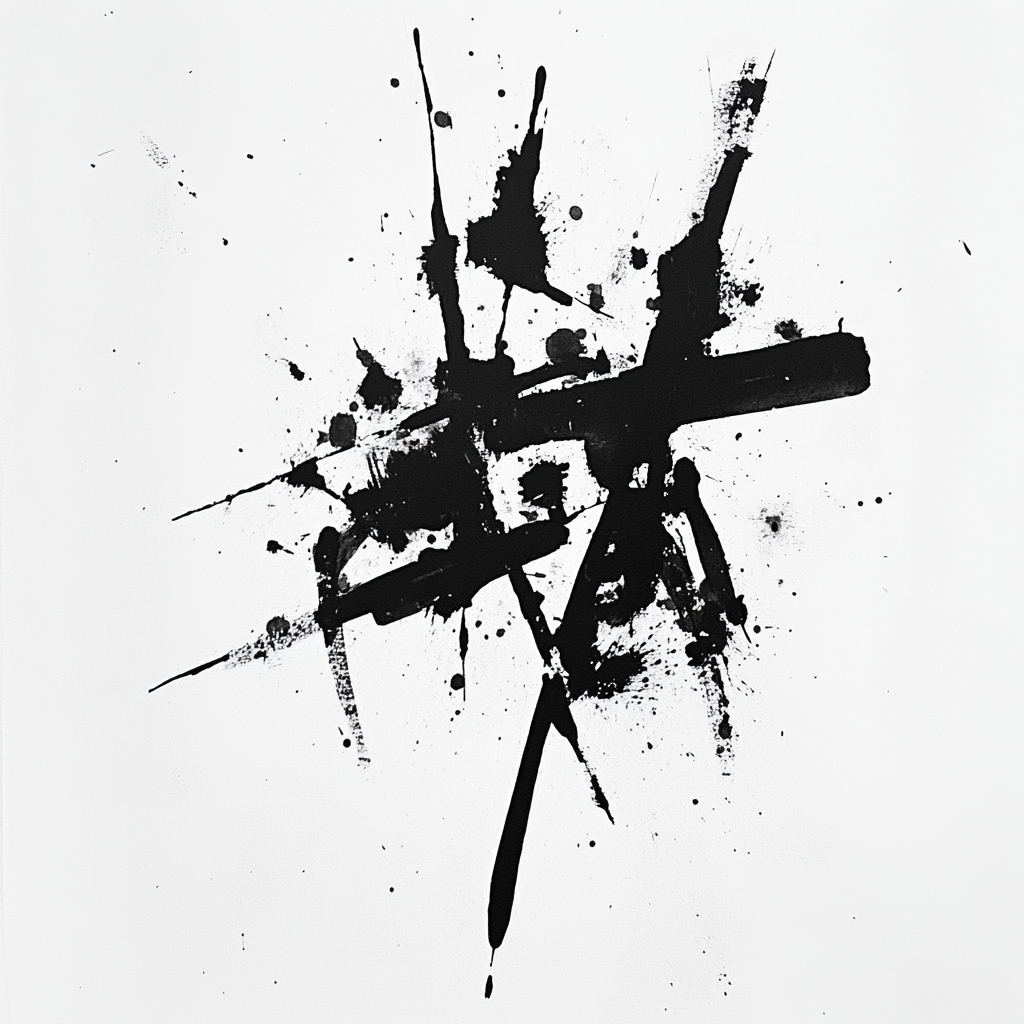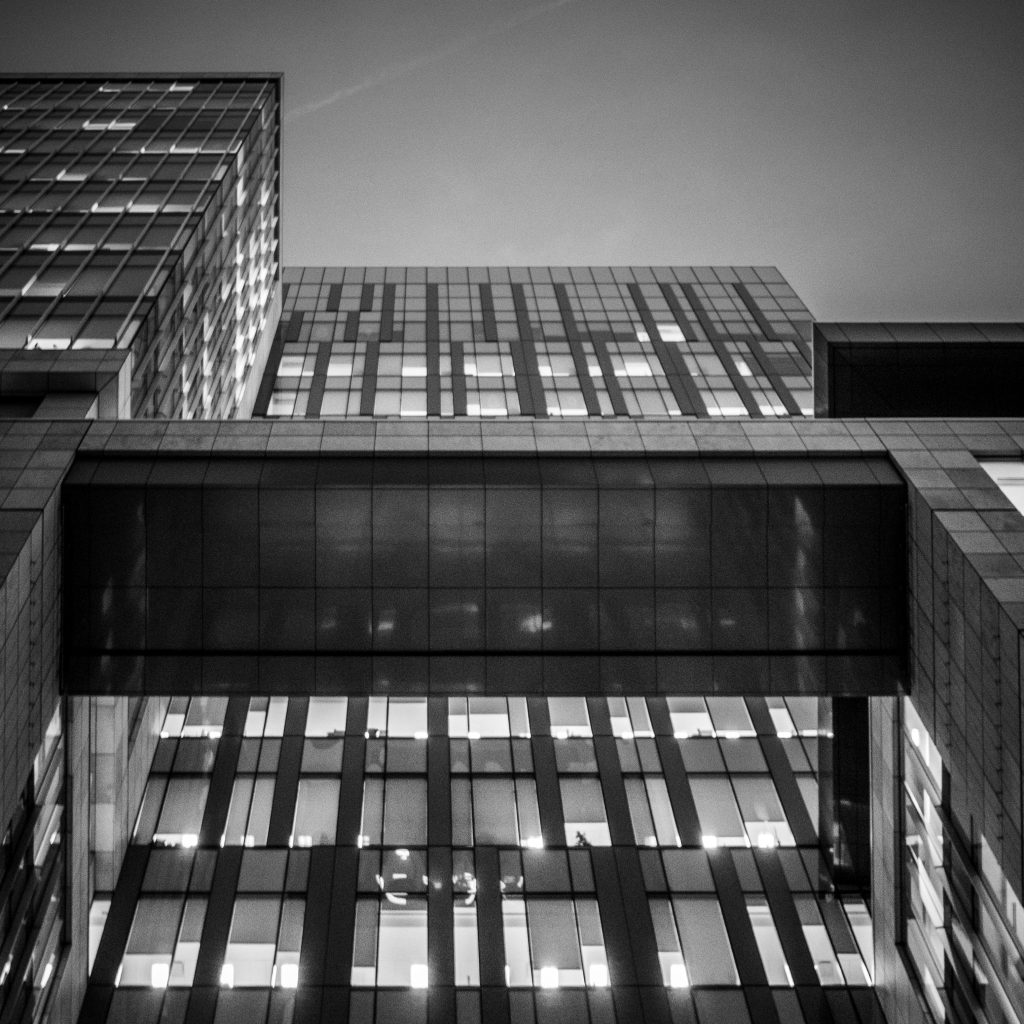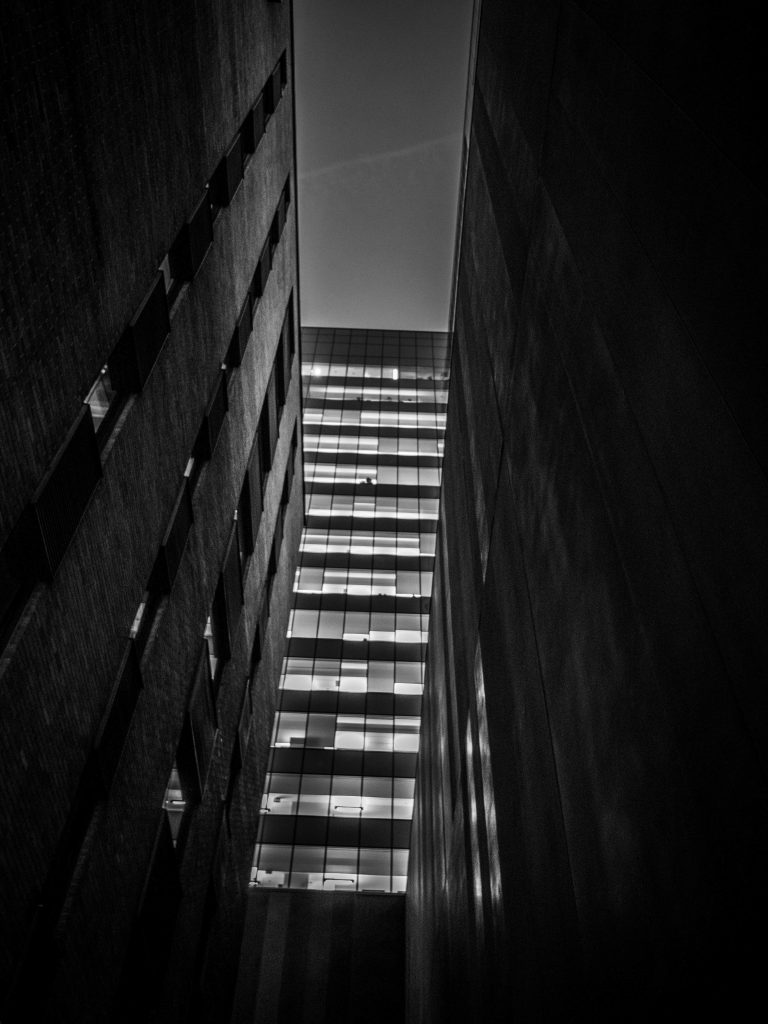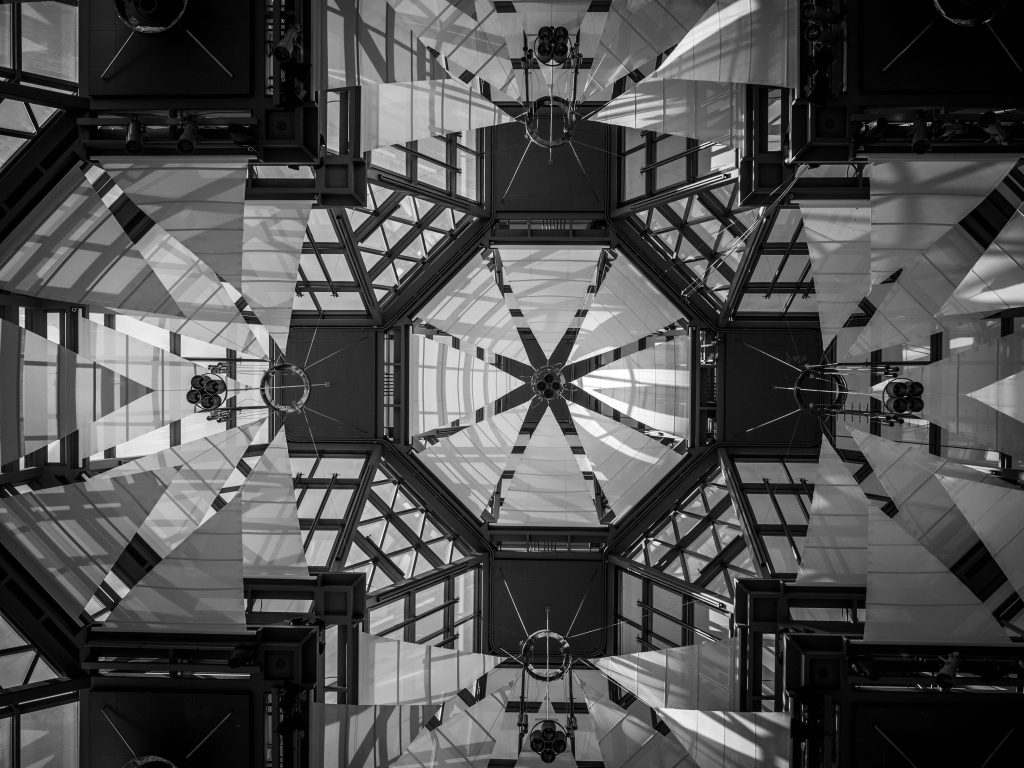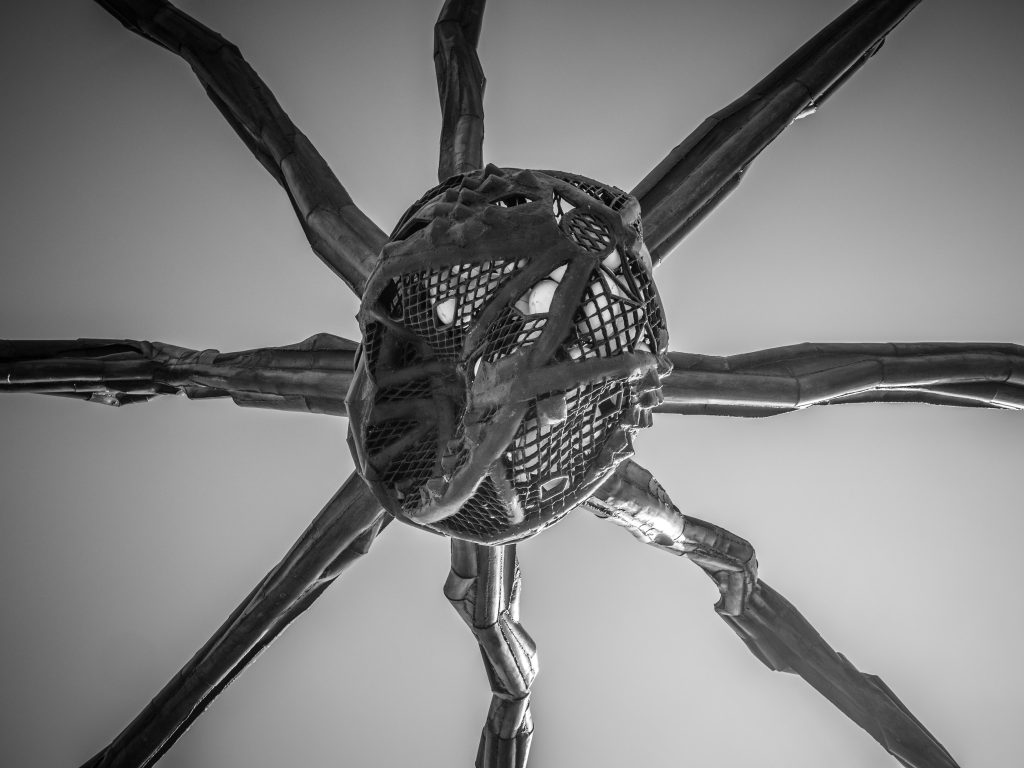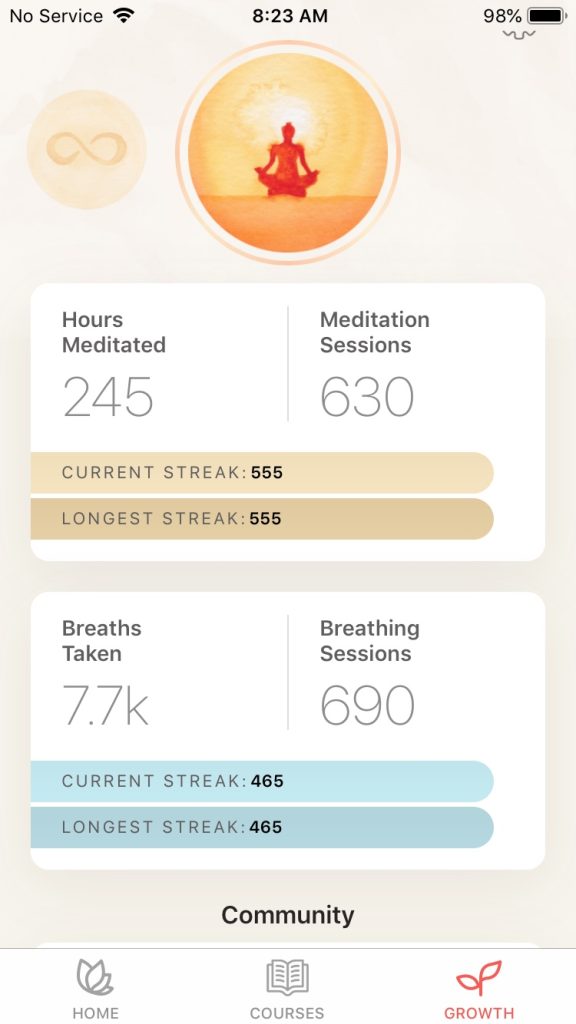Augmented Reality (AR) reshapes art by blending the physical and digital, turning viewers into co-creators through interactive, fluid experiences. Unlike the timeless works at the Prado or MOCA, which remain fixed in tradition, AR art evolves with the viewer’s actions and expands storytelling beyond galleries. This mirrors Don Quixote’s quest, where the boundary between reality and imagination blurs, inviting the viewer / reader into a co-constructed narrative. From a data literacy perspective, AR encourages intuitive engagement with data, highlighting its layered, real-time interaction. The contrast between the National Gallery or the Prado’s permanence and AR’s dynamic possibilities underscores how art can bridge tradition and technology, much as Quixote challenges the conventions of his time.
A Digital Sculpture of Entangled Futures
CORPUS, the towering Augmented Reality (AR) figure anchored on the Hammer Museum’s sculpture terrace, invites us to consider a future of blended, embodied entanglements between human, machine, flora, and microbiome. This virtual sculpture is not just an exploration of technology’s role in art, but a bold proposition that challenges the very fabric of how we perceive reality, identity, and our place within the web of life. Through its glowing, dynamic form, CORPUS offers a visual and conceptual disruption of the boundaries that separate the organic from the technological, the physical from the digital, and the human from the non-human. I haven’t visited this exhibition, only seen the videos online showing the augmented form.
Post-humanism and Entanglement: Blurring the Boundaries
At the heart of CORPUS is a theme of posthumanism, which imagines a future where distinctions between humanity and its technological and natural counterparts dissolve. The sculpture’s hybrid form—where human anatomy is fused with the organic patterns of plants and microorganisms—resonates with the speculative visions of thinkers like Rosi Braidotti and Donna Haraway. These theorists have argued that the boundaries separating the human from the non-human, the living from the non-living, are increasingly porous in our digital and ecological age.
CORPUS mirrors this vision. Its body—a glowing, ever-shifting mass—is a site of constant transformation, where the organic and technological are not in opposition but in symbiotic entanglement. It is not merely a human figure distorted by technology, but a representation of a future where these elements are indistinguishable from one another. This idea of entanglement is also a critique of human exceptionalism, echoing Haraway’s Cyborg Manifesto, which challenges us to move beyond the anthropocentric view and recognize that humans are intertwined with machines, animals, and the earth. The microbiome and flora elements embedded in the figure further highlight the importance of non-human life forms, which often remain invisible in traditional representations of the human body.
The work speaks to a future where humans are no longer the central agents of their own story. In this context, CORPUScould be seen as an embodiment of the posthuman—not in the sense of the end of humanity, but in the reimagining of human identity as something that is no longer defined in isolation but as part of a broader, interconnected system.
In this reimagined future, CORPUS envisions a world where the boundaries between the human, the technological, and the natural dissolve—similar to the themes explored in iconic movies such as Ghost in the Shell and The Matrix. Just as Major Motoko Kusanagi in Ghost in the Shell grapples with the merging of her human consciousness and cybernetic body, CORPUS embodies the notion that human identity is no longer isolated but exists as part of a complex, interconnected system. Similarly, in The Matrix, the characters are forced to confront the artificial nature of their reality, where the distinction between the human mind and the digital world is increasingly blurred. Both narratives question human exceptionalism and highlight the fluidity of identity in a world shaped by technology. In the context of CORPUS, this fusion of organic and technological elements invites viewers to rethink humanity’s place, urging a shift away from the idea of isolated agency toward an understanding of human existence as intricately tied to the larger ecological and technological systems around us. Just as in Ghost in the Shell and The Matrix, CORPUS forces us to confront a posthuman future where identity is fluid, collective, and symbiotic.
The Digital and the Physical: The Dissonance of Augmented Reality
The AR nature of CORPUS elevates the conversation from one of purely thematic resonance to a dynamic, immersive experience that directly engages the viewer. Situated on the Hammer’s terrace on Wilshire Boulevard, the sculpture is accessible only through a smartphone device, creating a layered reality—a fourth wall (conveniently the name of the app used) that separates the viewer from the object of perception. This mediating technology forces us to reconsider how technology alters our relationship with space and materiality, echoing the profound dissonance between reality and illusion explored in Don Quixote. Like Cervantes’ Don Quixote, whose delusions of grandeur blur the line between fantasy and reality, CORPUS creates a digital world where the physical and the virtual collide, making us question the boundaries between what is real and what is simulated.
This tension between the tangible and the digital resonates with Jean Baudrillard’s theories on hyperreality. Baudrillard argues that in a world dominated by digital technologies, simulations can become more “real” than the realities they represent, blurring the line between the authentic and the fabricated. Similarly, by requiring viewers to experience the sculpture through the digital lens of their smartphones, CORPUS critiques how technology mediates and reshapes our interaction with the world. Its immaterial nature—existing only in virtual space—challenges the permanence and physicality traditionally associated with sculpture, urging us to reconsider what art can become in a digital age where the boundaries of reality are increasingly unstable.
This interplay between the digital and the physical suggests a broader shift in art toward the ephemeral and virtual. Like Don Quixote’s quest, which is both shaped by the tangible world and transformed by his fantastical perceptions, CORPUS reveals how digital spaces increasingly dominate artistic creation and our engagement with reality. It also echoes David Cronenberg’s Videodrome, where the merging of flesh and media interrogates the transformative—and often unsettling—power of technology over perception and identity. The sculpture’s intangibility evokes the digital sublime, an immersive experience that bridges the virtual and physical, making us question not only the nature of reality but our evolving place within it.
Marshall McLuhan’s idea that “the medium is the message” illuminates CORPUS’s reliance on AR. The smartphone, essential to experiencing the sculpture, shapes both its perception and meaning, turning the act of mediation into the message itself. CORPUS exists as a networked experience, where the viewer’s engagement is both empowered and constrained by technology. Like the television in Videodrome (the story can be seen as an homage to McLuhan), the smartphone extends the self, transforming perception into an integral part of the artwork and highlighting McLuhan’s belief that our tools actively redefine human experience.
Ecological Themes and the Reclamation of the Microbial World
Another compelling layer of CORPUS lies in its engagement with ecological themes, particularly through the integration of microbiomes and plant life. Unlike works where organic elements serve as aesthetic embellishments, here they are foundational, suggesting a vision where human and non-human entities coexist as equals. This echoes the growing field of eco-futurist art, aligning with thinkers like Sophie Yeo, who explores how climate art grapples with humanity’s role in ecological crises. CORPUS takes this further, embedding these invisible forms of life as intrinsic to its being, emphasizing the interdependence that sustains life on Earth.
By foregrounding the Anthropocene—the era defined by humanity’s reshaping of the planet—the sculpture critiques the hubris of technological dominance, instead advocating for a symbiosis between the organic and the synthetic. The blurring of these boundaries reflects an urgent need to rethink our ecological future, not as one of domination but of integration. In this way, CORPUS positions itself as both an artistic speculation and a call to action, challenging us to imagine coexistence as a path to survival.
The Viewer’s Role: Participating in the Entanglement
The experience of CORPUS is inherently (necessarily?) participatory, requiring the viewer to activate the sculpture through their smartphone—a device as central to contemporary life as it is to the artwork’s existence. In this way, the viewer is not merely an observer but an essential participant in the entangled system that CORPUS represents. The sculpture’s form and presence depend on this technological mediation, collapsing the boundary between object and observer. This interaction recalls the work of artists like Rafael Lozano-Hemmer, whose installations integrate the audience into the artwork itself, transforming passive observation into active engagement.
By relying on the viewer’s participation, CORPUS blurs distinctions between art, audience, and technology. The sculpture exists only through interaction, creating a shared space where the digital and physical intertwine. In doing so, it moves beyond traditional notions of art as static and complete, embracing a co-constructed reality shaped by networks of interconnected forces. Much like the flux of technological, ecological, and human systems, CORPUS offers an evolving expression of how meaning emerges collaboratively, reshaping the viewer’s role into that of an active participant in the art’s becoming.
In this way, CORPUS becomes not just a visual encounter but a metaphor for the larger ecological and technological networks that define contemporary existence. Much like Don Quixote, whose perceptions of the world are shaped by his idealized visions of chivalry and adventure, CORPUS challenges our perceptions of reality—an experience that cannot be understood without the mediation of technology. Just as Don Quixote’s quest is inextricable from his delusions, our contemporary lives cannot be disentangled from the digital and natural systems that shape them. The viewer, by engaging with the artwork, becomes an active participant in this entangled future, implicating themselves in the very realities CORPUS seeks to depict, much as Quixote’s journey invites us to explore the blurred boundaries between fantasy and reality.
CORPUS is a radical meditation on the future of human existence, framed within the interwoven relationships between nature, technology, and identity. It interrogates boundaries—both literal and metaphorical—urging us to reconsider our role in a world that increasingly resists easy categorization. Much like the intertwining of the real and the imagined in Don Quixote’s adventures, CORPUS blurs the lines between the organic and the synthetic, the human and the non-human. Through its glowing, mutable form and its invocation of ecological and post-humanist themes, the sculpture invites us to ask not what we can separate, but what we can bring together. This vision mirrors the shifting ideals of a world where boundaries dissolve, and like Quixote’s quest for a higher truth, it challenges us to reimagine what it means to be human in an increasingly complex, interconnected universe.
